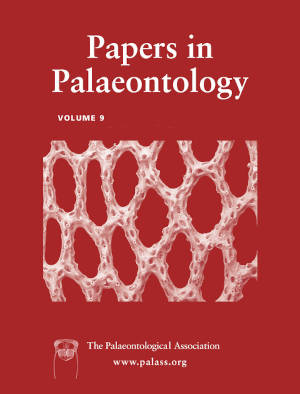Article: An abundant sea anemone from the Carboniferous Mazon Creek Lagerstӓtte, USA
Publication: Papers in Palaeontology
Volume:
9
Part:
2
Publication Date:
2023
Article number:
e1479
Author(s):
Roy E. Plotnick, Graham A. Young, and James W. Hagadorn
DOI:
10.1002/spp2.1479
Abstract
Abstract Sea anemones (Actiniaria) are among the rarest of recognized fossil organisms, even rarer than jellyfish. Here we demonstrate that the most abundant fossil in the Pennsylvanian Mazon Creek Lagerstätte of Illinois, Essexella asherae, is an infaunal or semi-infaunal anemone. Essexella is redescribed based on a taphonomic analysis of thousands of specimens, as well as associated medusae and trace fossils. Specimens of Essexella (also known as the ‘blobs’) were long believed to be medusae, but we reassign Essexella to the order Actiniaria and reinterpret the putative jellyfish Reticulomedusa as the pedal or oral disc of Essexella. We also implicate Essexella as a producer of Conostichus, a widespread plug-shaped trace fossil that occurs in coeval strata in the same region. Radiate structures comparable to the bases of Conostichus and the ichnofossil Bergaueria, as well as the pedal discs of modern anemones, characterize Reticulomedusa. Bona fide medusae are present in the Mazon Creek biota, and include Anthracomedusa turnbulli and Octomedusa pieckorum, whereas the soft-bodied fossil Lascoa mesostaurata is referred to Problematica.
